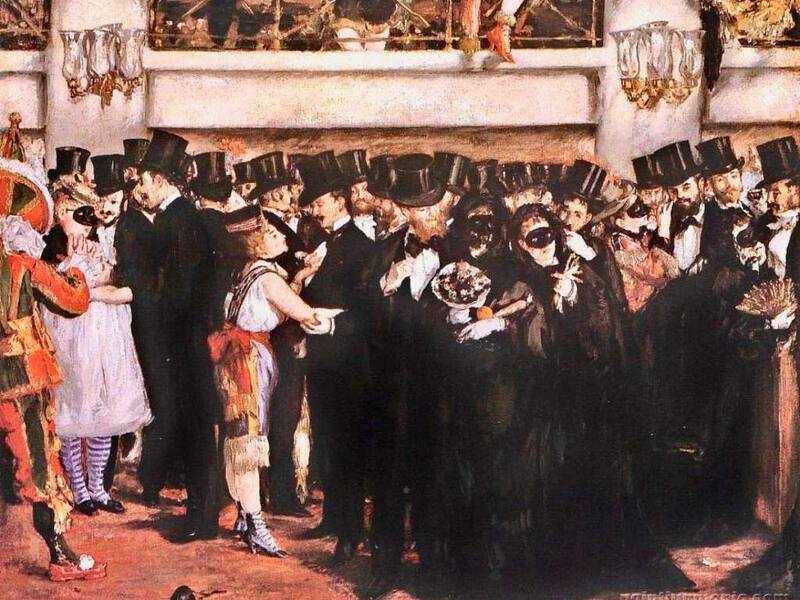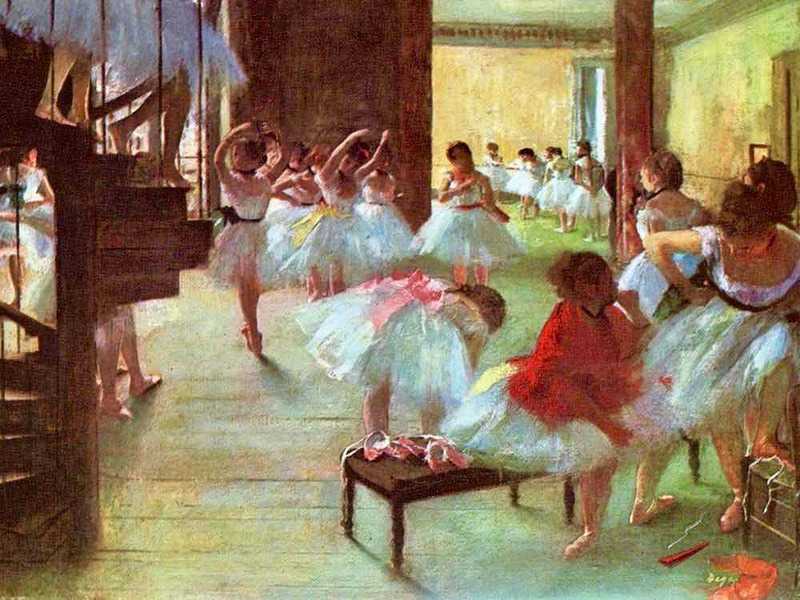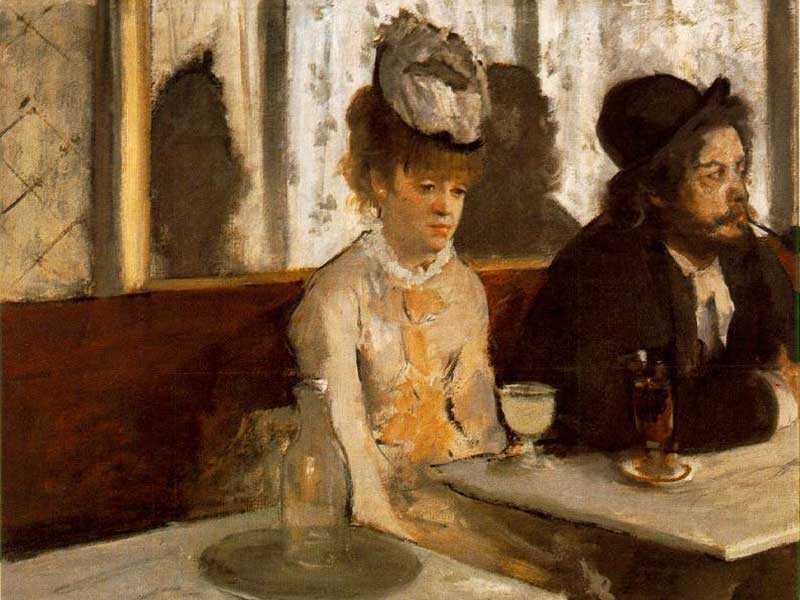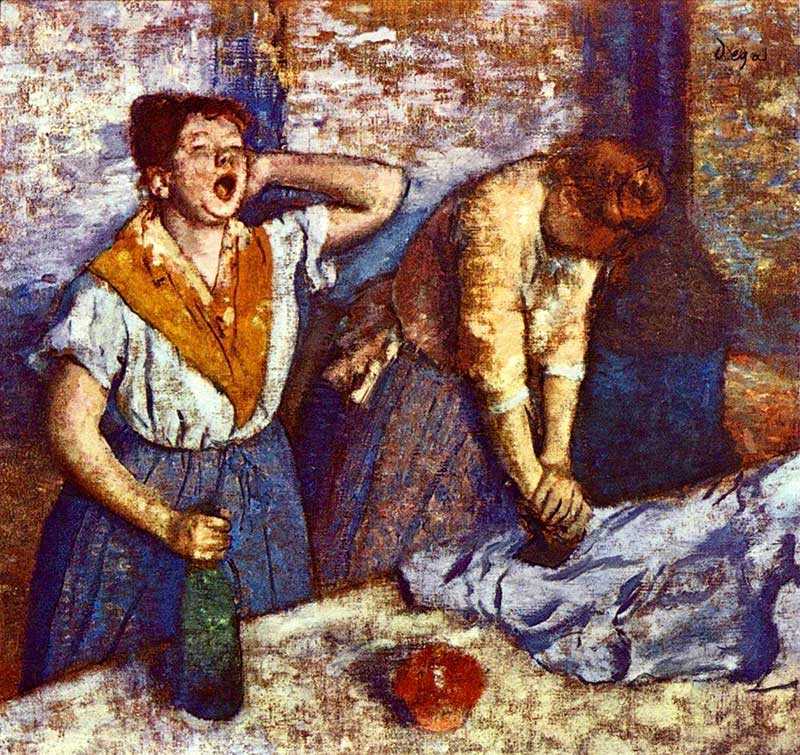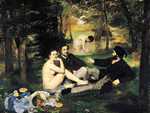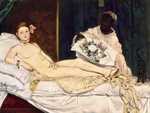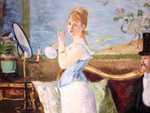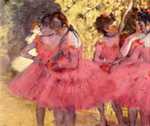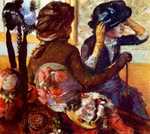1. Prostitution in 19th century Paris
Prostitution was an integral part of Parisian culture in the 1800s.
It was widespread and conspicuous, quickly becoming a popular subject for art, literature and the newspapers.
Number of prostitutes in Paris
From the 1830s onwards, the number of prostitutes working in Paris increased dramatically as a result of political and demographic changes.
First, the transformation of Paris into a modern industrial city encouraged the migration of women from the countryside towards the urban centre. According to a study of Paris-based registered prostitutes, conducted in 1889, 75 percent were not born in Paris.
Secondly, widespread migration to industrial centres coincided with a low point in demand for women in the labour force. What work there was for women, mostly in the garment industry or domestic service, was often terribly underpaid and unstable.
One contemporary writer, Maxime De Camp, estimated that Paris had 155,000 prostitutes between 1870 and 1900.
Low Pay for Women
In almost every line of work, the salary for women fell below what was needed to cover basic living expenses. Milliners earned a salary between 2 and 4 francs per day.
Taking into consideration the average food costs from this period, women would be left with approximately 40 cents per day for all other living expenses. By this estimate, women in these circumstances would be at least 200 francs short at the end of the year.
Faced with unemployment or underemployment, prostitution became a necessary choice for many women. Indeed, the only options open to a working-class woman at this time - in order to make up the difference between income and living expenses - was through cohabitation with a man or prostitution.
Milliners
As well as registered prostitutes, there was also many forms of clandestine prostitution, largely stemming from woefully underpaid professions like needlework, which included millinery. Their customers were largely partnerless male workers who had recently arrived from rural areas and middle and upper class Parisian men.
As we explain below, Degas produced a series of paintings of milliners.
At the same time, the female prostitute became a well-known figure in paintings, poems and novels, a feature that endured throughout the 19th century and beyond. The cultural response to the rise in visible prostitution approached the subject as a symbol for the degraded morals of the city, as well as widespread societal decadence.
Courtesans
Later into the 1800s, there was also the appearance of the courtesan in representations of prostitution. These prostitutes, written into the culture of the 1850s and 1860s, were women who assumed the fashions and behaviours of bourgeois society.
Rather than having the appearance of poverty-stricken streetwalkers, another popular image, the courtesan was well-dressed and elegant. They were a particular favourite of Edouard Manet, who painted courtesans in Masked Ball at the Opera and in Nana.
Indeed, Olympia -- the prostitute featured in Manet's 1865 painting of the same name -- was also probably a courtesan. She had a maid, is lying in an expensively decorated boudoir, and is being handed flowers sent by one of her clients. Olympia was probably the most controversial painting of the 19th century.
2. Prostitution in Manet's Art
Until as late as the 1990s, the theme of prostitution in Impressionist art had been hugely under-acknowledged.
One of the reasons for this is the gendered nature of art history, which meant that few scholars had ventured to explore the portrayals of prostitution and working-class women during this period.
In fact, some of the most notorious public images of prostitution during the 1870s and 1880s were painted by Impressionist artists. Similarly, subtle references to prostitution are almost too numerous to count in Impressionist art.
On the other hand, the Impressionists did not attempt to challenge the social issues surrounding prostitution in the same way that many Realist artists did.
Among the Impressionists, it was Manet and Degas who returned most often to the image of the prostitute, albeit in different guises. We explore Manet's works immediately below and Degas' in the next section of this page.
Manet's Olympia
The most famous impressionist painting of a prostitute is undoubtedly Manet's Olympia.
In this work, now found in the Musee d'Orsay, Manet depicts a courtesan lying on a reclining couch staring brazenly at the viewer. She is adorned with jewellery, an orchid in her hair, and a black ribbon around her neck.
There is no doubt that Olympia is a prostitute: the name Olympia was used to refer to prostitutes in Paris at this time); Olympia is naked but in no way embarrassed by her pose; the black cat was an icon of promiscuity; Olympia is being handed flowers, presumably from a client; and Olympia's jewellery, black ribbon, and sumptuous bedclothes and apartment compete the picture of a courtesan's boudoir.
Most importantly, and like the nude figure in ‘Le Déjeuner sur l’herbe' or ‘Luncheon on the Grass’ from 1862-63, the sitter stares out at the viewer with a bold, challenging gaze.
This painting is one of the few Impressionist artworks that has historically been read through the lens of prostitution in France - it is almost unavoidable not to - but there were many more Impressionist works that played with the theme of prostitution.
Manet's Masked Ball at the Opera
Manet scored a rare success at the Salon in 1873 with a painting called Le Bon Boc. But his submission the next year, Masked Ball at the Opera, was rejected by the Salon's jury.
The work depicts masked top-hatted men from the upper echelons of society cavorting with often masked women in a scene completed with clowns and acrobats. The women are generally assumed to have been prostitutes and courtesans, though this is far less obviously the case than with Olympia.
The rejection of this work by the Salon may have been because members of the jury thought that they might be recognised in the painting. They needn't have worried. The faces of the men are either self-portraits or portraits of Manet's friends.
Manet's Nana
Manet’s ‘Olympia’ and Masked Ball were followed by ‘Nana’ in 1877, which went on to inspire a character by the same name in Émile Zola’s infamous novel about sex work.
Nana, depicting the courtesan known as Henriette Hauser, is another confident young woman. She is captured before a full-length mirror getting ready to go out. She wears expensive clothes (such as embroidered stockings) and jewellery; and the background shows that she lives in an opulent apartment.
But the most striking thing about the painting is Nana's client, a top-hatted middle-aged man who is seen on the far right. Nana seems to be ignoring him completely!
Manet's Bar at the Folies Bergere
In the late 1870s, Manet painted a series of works featuring waitresses in a so-called ‘brasserie à femmes’. These drinking establishments centred on the sexual availability of the female employees, who were actively encouraged to flirt with men and coax them into buying alcohol.
This new form of pleasure, seized upon by business-minded bar owners in Paris, became directly linked to prostitution in popular culture. Consequently, they quickly became a target for moral outrage too.
Manet’s final Salon painting from 1882, ‘A Bar at the Folies-Bergère’ took the image of the barmaid further. The work captures the busy interior of an enormously popular music hall and cabaret, which also served as a well-known venue to pick up prostitutes. One barmaid and prostitute named Suzon served as his model.
What is interesting about this complex work is the solid, cryptic gaze that Suzon fixes on the viewer. The interior of the bar swims around her, rotating and shifting but she remains static. Silent, alone and staring out of the painting.
3. Prostitution in Degas' Work
In 19th century Paris, working-class women in trade were often suspected of being involved in prostitution, whether they were or not.
As Hollis Clayton explains in ‘Painted Love: Prostitution in French Art of the Impressionist Era’,
“Women had but two alternatives: they were either ménagères (housewives) or courtisanes (harlots)”. If a woman worked outside the home, there was a presumption that she also sold herself.
This societal assumption was closely tied to the pervasive belief that the sexuality of working women was inherently unstable. The discourse of the 19th century characterised working-class women as being in constant danger of falling into prostitution, either as a result of poverty or in-built ‘sexual deviance’.
As a doctor who specialised in the treatment of clandestine prostitutes summarised in 1885:
“One must follow this prostitution into the less accessible places […] I wish to speak of houses of perfume, gloves, collars, ties, photographs, prints and even book stores, that open onto the great districts of Paris.” The reputation attached to these trades made the women who worked there appealing subjects for avant-garde artists.
Degas' Ballet Dancers
Degas’ paintings of ballet dancers, including ‘L’étoile’ from 1878, ‘Dancers, Pink and Green’ from 1890 and ‘Dancers at the Old Opera House’ from 1877 were also part of a wider exploration into the business of sex at the Parisian opera.
During the 1800s, ballet dancing was directly linked to sex work as dancers were expected to engage in sexual relationships with wealthy male patrons. The ‘foyer de la danse’ where the dancers would warm up before performances doubled as a men’s club where patrons could socialise and proposition the ballerinas. Degas’ works often feature shadowy figures lurking in the wings that contrast with the glittering figures on stage.
Degas' Milliners
He also painted a series centred on milliners between 1882 and 1885. These works, of which there were at least 16, play on the traditional concept of milliners as covert prostitutes in Paris. Though Degas’ milliner series are less bodily than his ballerina paintings, it is crucial to recognise the erotic connotations of the millinery trade at this time.
The Impressionists’ frequently chose milliners as subjects for their paintings. Their decision to set their paintings in millinery shops can be linked to a popular image of ‘modistes’ as highly eroticised young women. In the words of C.J. Lecour, writing in 1872, milliners worked “under the pretext of a lucrative business” but “quickly allow themselves to become perverted”. Sexualising images of milliners were widely circulated at the time, often entirely ignoring economic drivers and instead portraying the women as promiscuous and immoral.
Manet and Renoir's Milliners
As well as Degas, Manet and Renoir also chose milliners as motifs of modernity. The milliner’s shop provided male artists with an inviting opportunity to explore everyday life from a particularly enticing angle, shot through with implicit sexuality. Though their works may seem innocent enough to modern viewers, they should not be removed from the social context in which they were painting.
Taking a second look, for instance, at Renoir’s ‘At the Milliner’ (ca. 1876-1878), the ambiguous expressions of the attractive young women he depicts can be read less innocently than they have been in the past. This work is not explicit in any way, yet it hints at what attracted Renoir to the motif of the millinery shop: female sexuality in a somewhat conspiratorial form, set in a public marketplace. The same is also true of Manet’s version of ‘At the Milliner’ from 1881, earlier titled ‘The Milliner’, showing a woman with her shoulders irresistibly bared.
The reputation of the milliner’s shop at this time immediately endows the paintings with an erotic undertone. So to do Renoir’s ‘The Laundress’ (1877-79), Manet’s ‘The Railway’ (1873) and ‘The Street Singer’ (1862), as well as Degas’ concert singers series. All these paintings hint at the pervasiveness of prostitution in modern Paris, from the perspective of men who knew the world well.
4. Prostitution in 20th Century Paris
By the late 1800s and early 1900s, prostitution had become commonplace in avant-garde art.
In fact, the depiction of prostitutes was so pervasive it had almost become cliched.
One of the icons of the new art form was Picasso’s first Cubist work, ‘Demoiselles d’Avignon’ of 1906. The irony is that this painting, though ground-breaking in its technique, was yet another image of prostitutes in Paris. Far from being a vanguard in French art, Picasso simply recycled the same subject that had been painted countless times before.
This fact becomes even more pronounced when considered in the social context of the time. Though prostitution had become a staple of the French avant-garde, in reality the number of prostitutes working in Paris had declined rapidly by the start of the 20th century.
Social and economic changes had meant that fewer women chose to enter prostitution. An increased demand for female labour had helped reduce unemployment in the city. Meanwhile, there had also been a lowering of the age of marriage, which meant that the number of marriages had increased. There had also been an increase in the use and effectiveness of contraception that meant families were having fewer children. The social controversies stirred by prostitution had also faded away.
Though social changes had dramatically reduced the number of prostitutes working in Paris, art continued to obsess over female representation in this highly sexualised form. The male artistic gaze could not move away from the seductive image of sex for sale. Consequently, the stereotypes that had been forged in the early 19th century endured long into the 20th century.
5. Legacy: Impressionism and Prostitution
In the West, the visual representation of women has been relentlessly sexualised.
Prostitutes are emblematic of the treatment of women in general in art: they are the quintessentially objectified woman.
During the mid to late 1800s, the avant-garde project sought to capture and define the anxieties caused by industrialisation. Wrapped up in this was the concept of the modern sexualised woman and particularly the contemporary prostitute. Through the eyes of male painters, we see an attempt to make sense of the modern sexual marketplace. At the same time, these artworks are part of a wider cultural project that stripped women of their own agency by transforming them into over-simplified stereotypes.
We can assume that many of the Impressionist artists themselves would have frequently visited prostitutes. The neighbourhood of Montmartre, a favourite among the Impressionists, was synonymous with prostitution. Similarly, Manet and Gaugin died from syphilitic complications, and van Gogh is known to have taken his severed left ear to a brothel worker in 1889.
Hence, it is hugely important to acknowledge the role of prostitution in Impressionist art. The capitalist economics of sexuality were reproduced in the work of the Impressionists. Artists including Manet, Degas and Renoir all used prostitution as a symbol for the modern world that they were eager to portray, whilst buying into and profiting from the stereotypes of the age.

